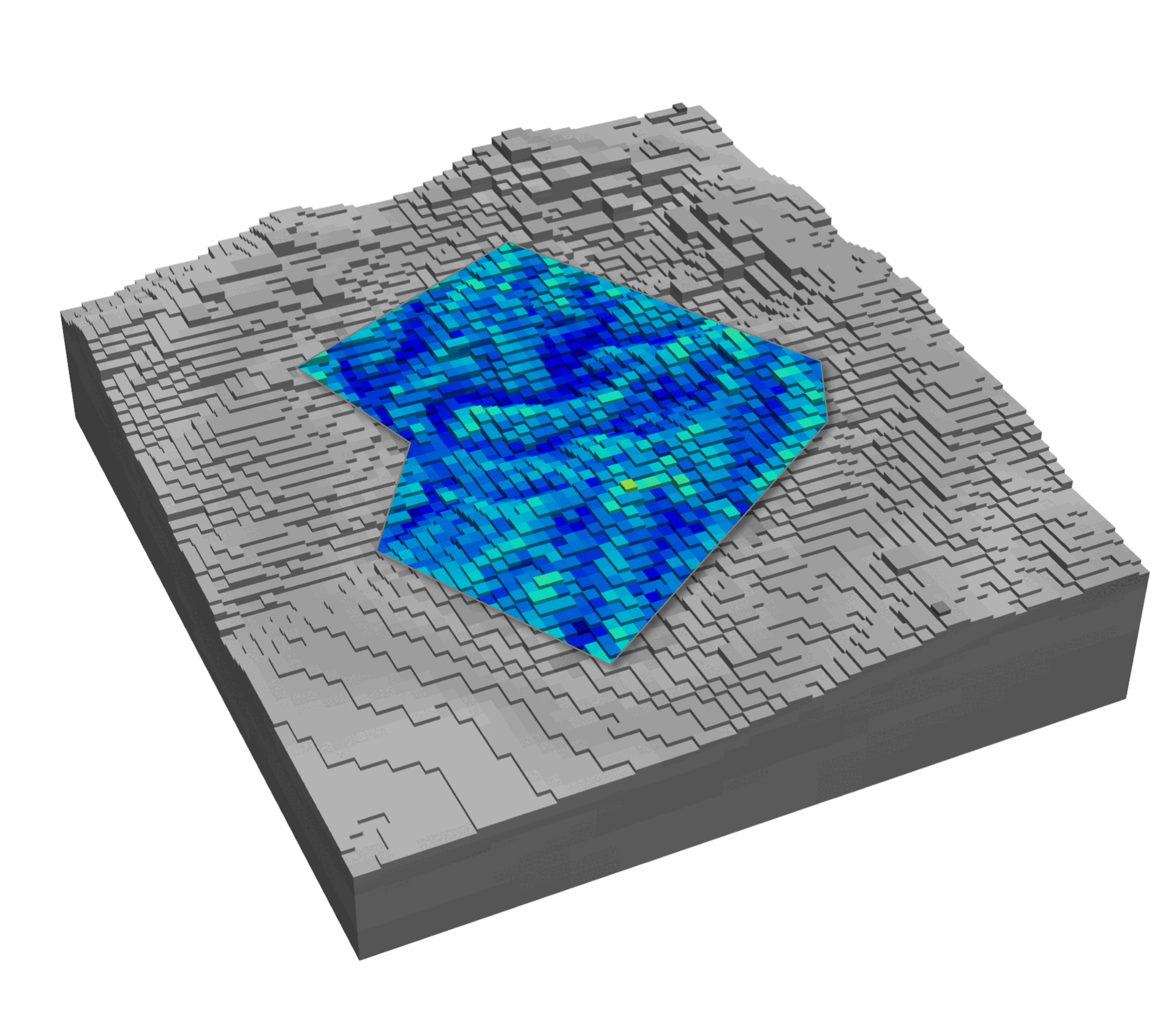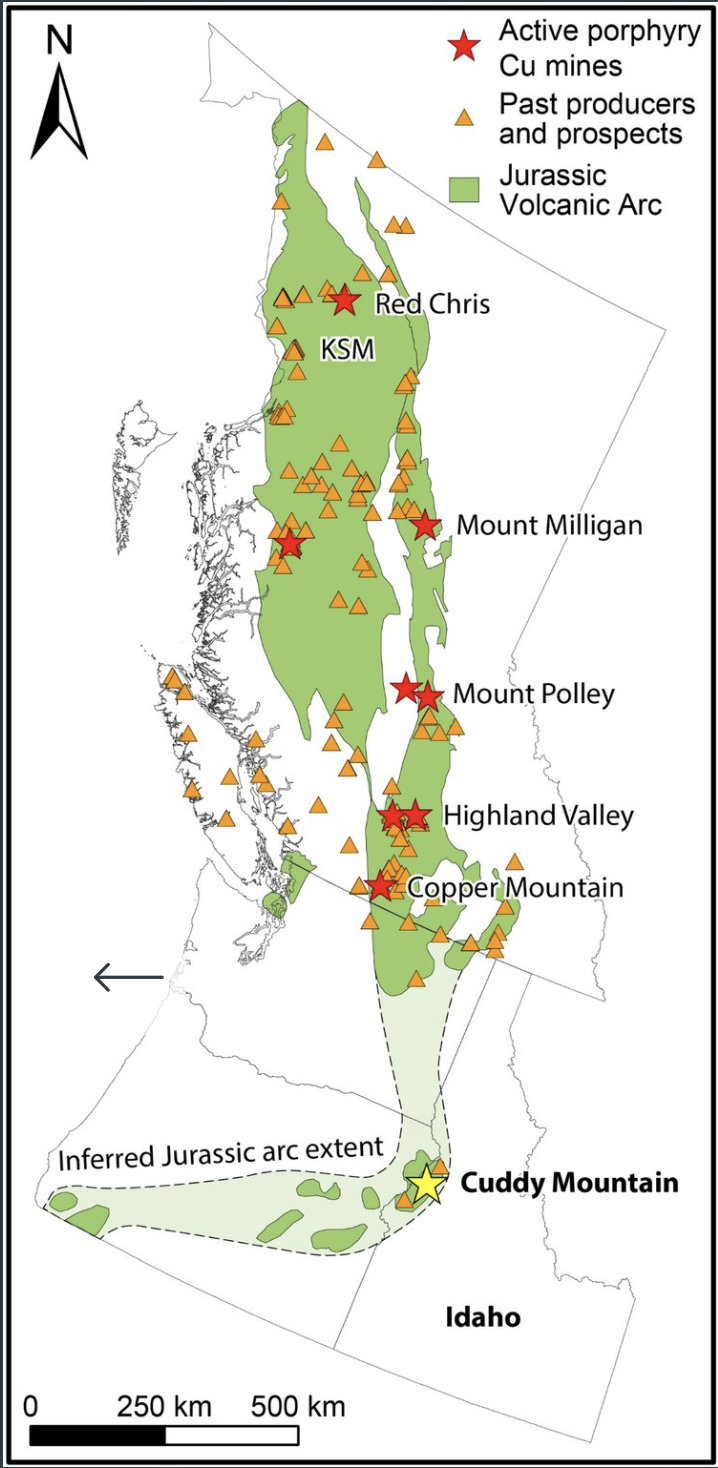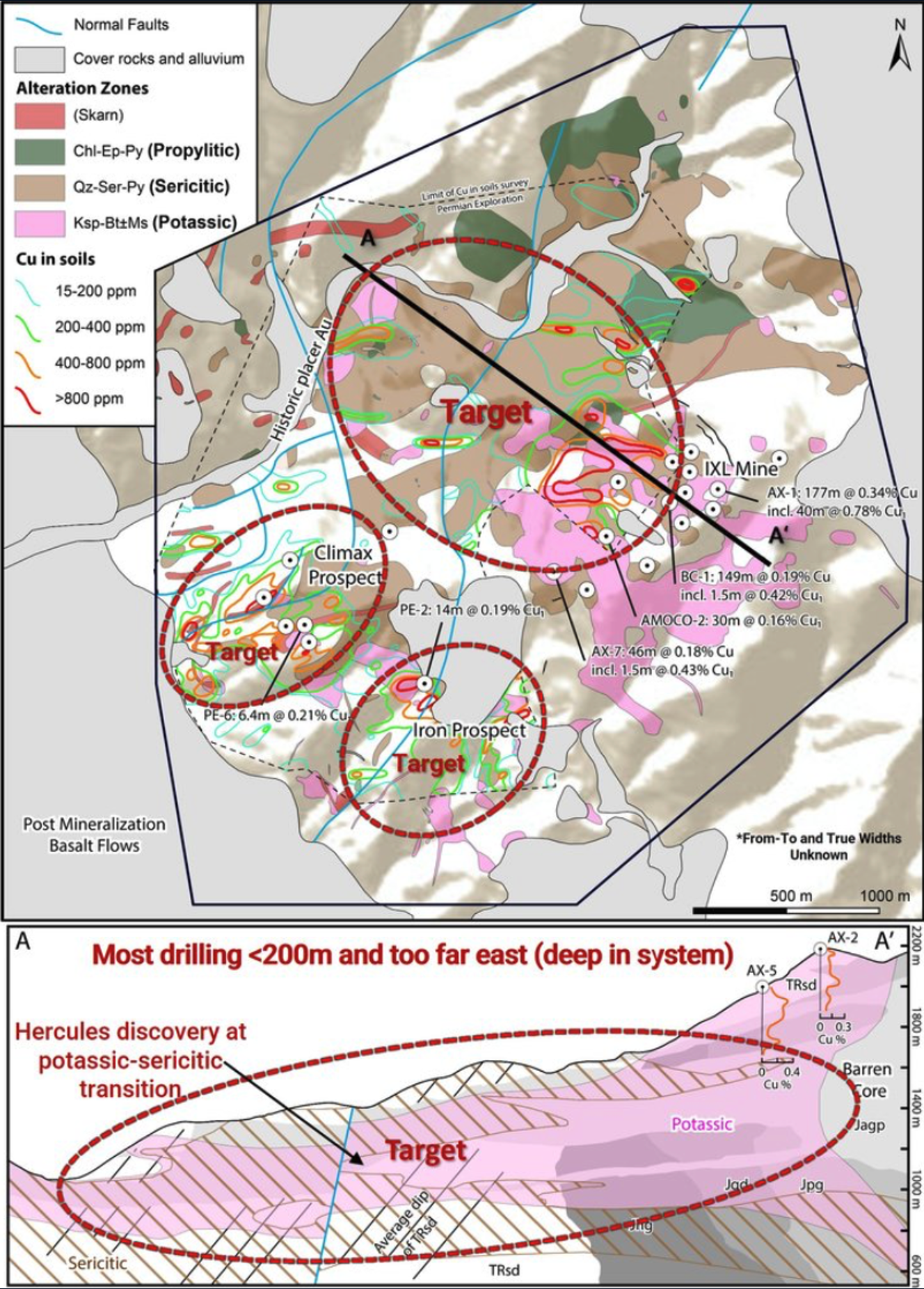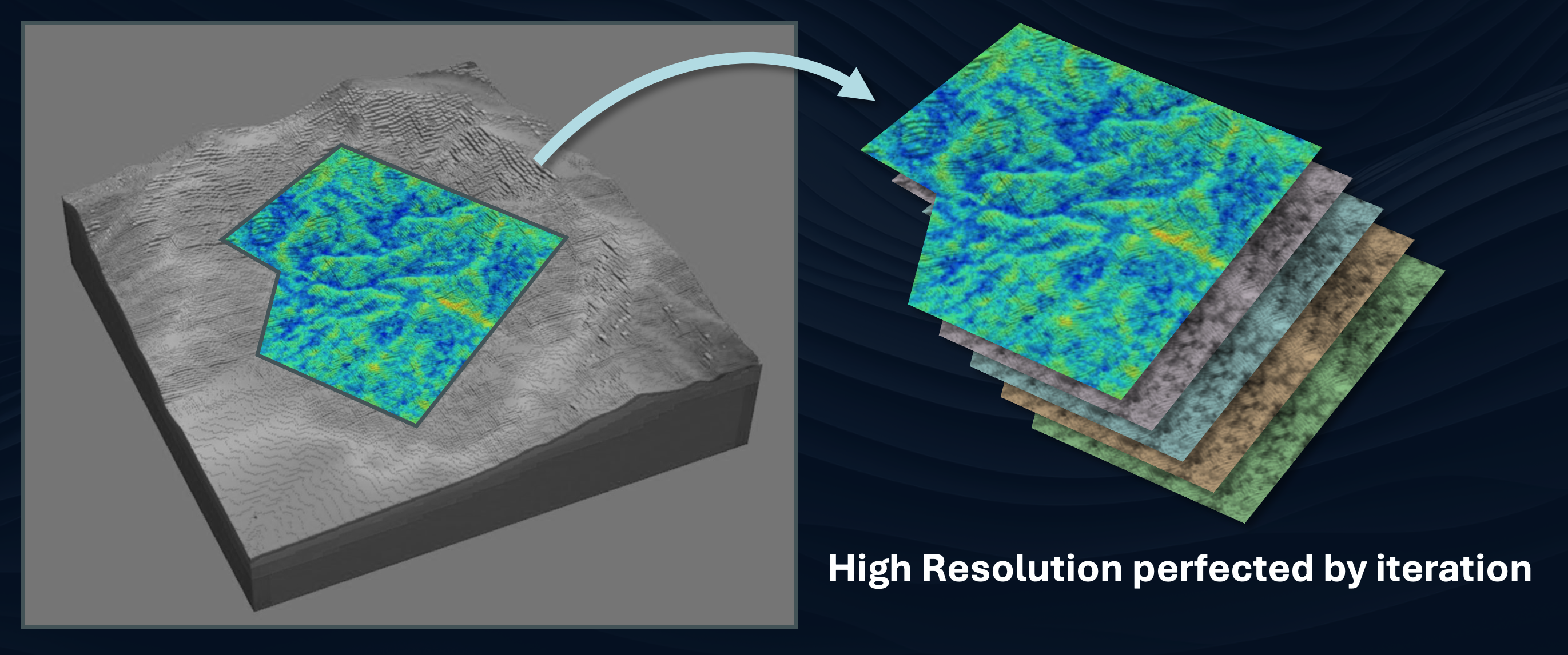
High Resolution Inversion with Scout Discovery Corp at Cuddy Mountain
- Scout Discoveries is exploring for copper-gold porphyry and skarn in Idaho.
- ExploreTech performed a high-resolution magnetization vector inversion (MVI) with 1 million grid cells (5-10x higher resolution than standard 100k-200k cells) using the ExploreTech Engine cloud computing platform.
- High resolution leads to deeper geological insight and refined targeting.
- Scout Discoveries will use these results for drill targeting in 2025.
The Cuddy Mountain Project
Overview: Cuddy Mountain sits within a mineral-rich volcanic belt staked by Scout Discoveries in 2020, located 20 km from Cambridge, Idaho. The project area includes the historic IXL copper mine, nearby to the Leviathan copper porphyry discovery by Hercules Metals. Cuddy Mountain's geology suggests it could be part of an emerging copper district at the southern extent of the same volcanic arc that produced many world class deposits in British Columbia, shown in Figure 1.

Figure 1. Regional setting of the Cuddy Mountain project. Cuddy Mountain shown to the south of the volcanic belt.
Geology: During the Jurassic, a pluton intruded Triassic-aged volcanic rocks, and likely created conditions necessary for mineralization. Indicators of economic mineralization include disseminated chalcopyrite-molybdenite, potassic alteration, and mineralized skarn.
Datasets: Cuddy Mountain has not been explored since surface geochemical surveys in the 1980s. Historical datasets also include drill results from the nearby IXL mine (~1960s), and mapping from the late 1800s. Scout has completed a comprehensive geochemical and field sampling survey in 2024 on a 100 by 100 meter grid, in addition to magnetics and induced-polarization (IP) geophysical surveys.

Figure 2. Map of the Cuddy Mountain project area, showing alteration zones and copper grades.
High-Resolution Inversion Highlights Drill Targets
Scout is using magnetics data to inform drill targeting, slated for 2025 and focused on on porphyry and skarn mineralization. Previous analysis of magnetics data identified magnetite in skarns and mineralized veins, as well as A-type veins throughout the IXL deposit. Scout wants to locate more of these magnetic skarns and mineralized veins.
On a typical computer, a 1 million cell 3D magnetization vector inversion (MVI) can consume the entire computer's memory. Even if the computer has enough memory, it would still take several hours to complete an inversion. And since inversions require manual parameter tuning, it becomes very hard to find the right tuning parameters at high resolutions. For that reason, a typical MVI might have 100k-200k cells.
The ExploreTech Engine overcomes the compute problem by (a) providing scalable compute capacity, and (b) running tens or hundreds of inversions with different parameter combinations in parallel. ExploreTech used The Engine to perform many high resolution inversions (1 million cells) in parallel, allowing us to simply pick the inversion with the best results. In just a couple days ExploreTech completed an MVI at resolutions 5-10x higher than what would be typically possible on a standard computer. The magnetization vector inversions covered an extent of approximately 10 km^2, at a resolution of 1 million cells.

The ExploreTech Engine generates inversion models at 5-10x higher resolution than a typical computer
Concluding Thoughts
Scout Discoveries will use this geophysical inversion to support drill targeting for their 2025 Phase 1 drilling campaign. Targets include four hypothesized porphyry centers, with follow-up work scheduled.